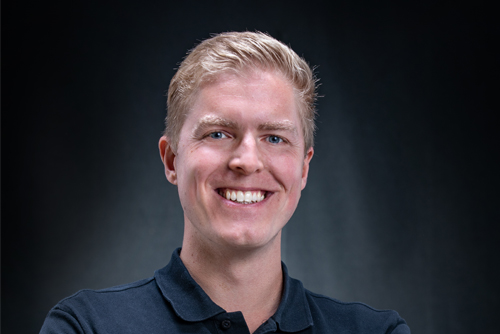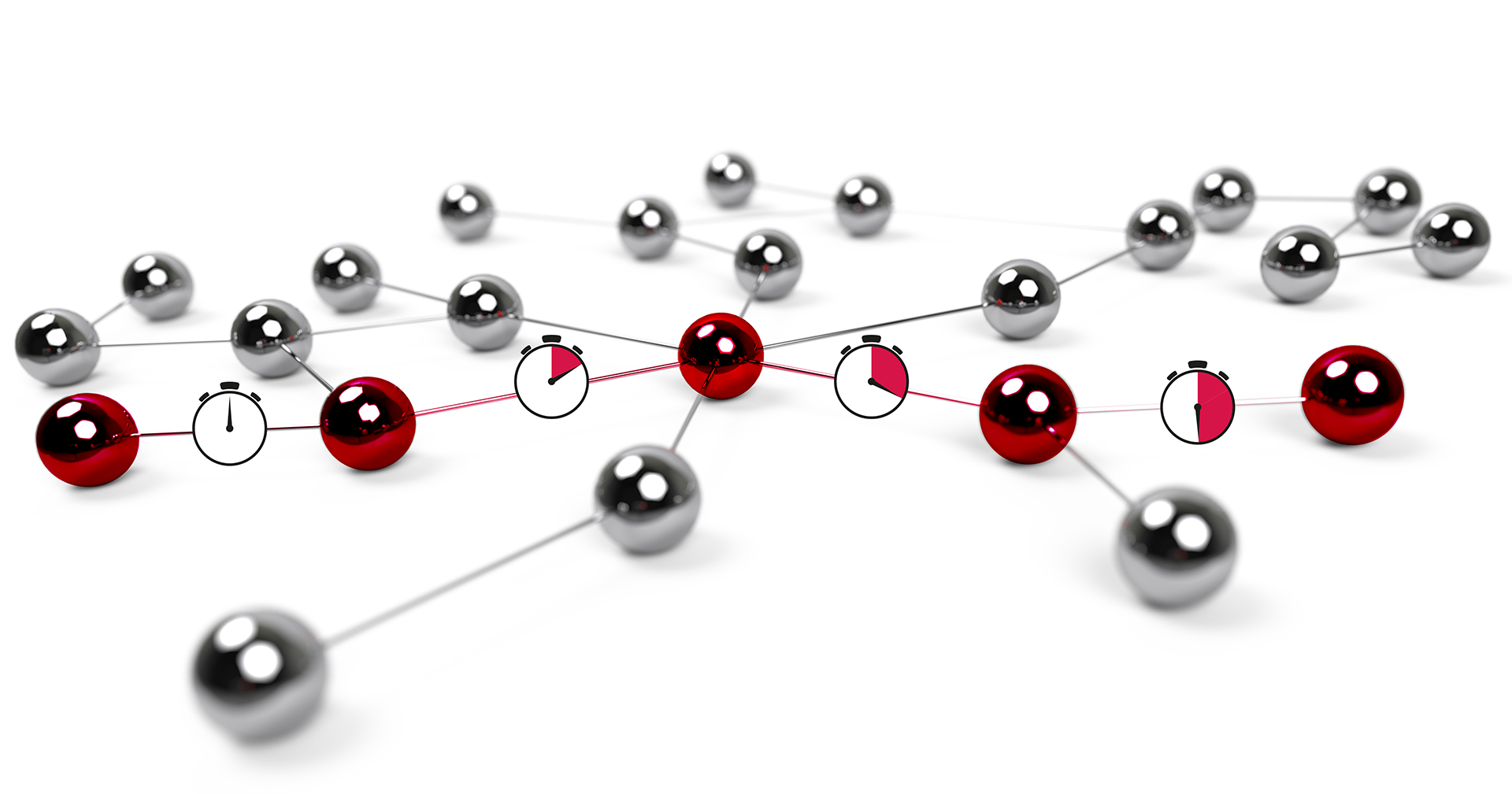Using the example of a transparent A-pillar and a motorcycle handlebar with structure-integrated cables, EDAG has researched how passive safety can be increased and individualization and greater freedom in component design can be achieved with the help of additive manufacturing.
Additive manufacturing processes are becoming increasingly more important in industry. Initially, the focus was on rapid prototyping, which enables shorter development times while meeting increasing quality demands, and on the production of unconventional geometries and structures using 3D printing, for example to create particularly lightweight components with a high load-bearing capacity or one-piece molds that previously had to be assembled from several parts. By now, further methods have been established that allow the creation of larger structures and the use of different basic materials, sometimes in combination.
One highly interesting variant of additive manufacturing is DED technology (Directed Energy Deposition), as it offers a wide range of possibilities. This allows for the processing of metals and alloys on the one hand, and ceramics and polymers on the other. Both metal wires and powder substrates can be used as a basis. For this reason, the DED process is particularly useful for projects that combine different materials and realize large-format components.
Multi-functional demonstrators
As part of the MULTI-FUN research initiative, the EU funded the development of innovative solutions for multifunctional products (MULTI-FUNctional) based on new types of active material combinations (multi-materials) using DED-Arc (arc-based DED process, also known as WAAM: Wire Arc Additive Manufacturing). EDAG contributed two demonstrators to this to show the potential of multi-material concepts in additive manufacturing for better functional integration of vehicle components.
The transparent A-pillar is a revolutionary approach that solves a well-known safety problem: blind spots caused by bulky A-pillars. Thanks to this solution, the driver has a better view of the road, which in turn improves passive safety in curves, roundabouts, when pedestrians and cyclists are crossing the road, and at intersections.
The functional motorcycle handlebar is a development that addresses the need for better design and more individualization in motorcycles. It allows the integration of electrical wiring, for example for lighting, indicators or the starter motor, and hydraulic lines for the brake and clutch into the structure of the handlebar, avoiding visible cables and hoses around the handlebar.
Transparent A-pillar with CAN bus integration
Together with LORTEK, a technology and research center of the Spanish Mondragon Association, extensive tests were carried out to develop design guidelines for DED manufacturing using wire and arc (DED-Arc). This included finding ways to meet certain requirements. For example, the minimum wall thickness should be 2.5 mm, but there must be no fluctuations in wall thickness whatsoever. Other requirements included robustness at T- or L-joints, flat edges instead of pointed ends and cantilever angles of up to 50°.
It showed that achieving the desired wall thickness of 2.5 mm with DED-Arc and 1 mm steel welding wire is still a challenge. Whether this thickness can be achieved depends on several factors, including the equipment and materials used. As part of the project, EDAG and LORTEK developed a new clamping tool for the DED-Arc process that can be used to apply double-sided pressure to a construction plate for direct use of this construction plate in the component.
In addition, the conflict between maximum view and crash safety had to be resolved when designing the A-pillar. This required numerous iterations and crash simulations of the grid-like structure. The Synera software was used to implement an automated design approach that optimizes rib-like structures in terms of crashworthiness, reduces manual effort and adheres to design guidelines at every design step and iteration.
As an additional function, electrical cables were integrated into the A-pillar to transmit data on a CAN bus (Controller Area Network). In a first variant, a wire was inserted into a slot, fixed and coated with zinc using the APPD process (Atmospheric Plasma Powder Deposition) to obtain a monolithic structure. As an alternative, the project partners investigated the possibility of using the APPD process to deposit CAN-capable conductors layer by layer directly into the steel structure, thus integrating electrical functions into DED-arc-manufactured structures. This provided important insights into design and manufacturing processes. 
The final tests carried out on the entire structure included three-point bending tests, which showed comparatively ductile behavior, resulting in higher energy absorption in the event of an accident. The structural stiffness and strength are in a range comparable to the conventional behavior of A-pillars made of steel plates.
Motorcycle handlebar without external cables
As a second demonstrator, EDAG, together with the AIT's LKR, developed a motorcycle handlebar. In this handlebar, all external electrical cables and hydraulic lines have been replaced by structure-integrated solutions. The investigated manufacturing strategy comprised a step-by-step approach. Aluminum alloy AIMg0.7Si TiB was chosen for the mechanical structure of the handlebar because it is similar to the standard AIMgSi alloys used in conventional handlebar production and because it is available as a wire electrode. 
First, the DED-Arc process is used to produce a hollow part half the width of the handlebar (1). The essentially triangular cross-section was chosen to save mass and to provide a basis for the application of the APPD process for the production of insulated conductors. With a few technical innovations, the developers were able to realize a U-shaped geometry (2) with tighter geometric tolerances than DED-Arc usually offers. Moreover, it was possible to find ways of dissipating the excess heat energy generated during the various steps.
The production of insulated conductors (3) begins with a layer-by-layer APPD-based deposition of several individual layers of aluminum oxide powder, onto which pure copper is applied, also from a powder substrate. By varying the masks that covered the areas where no conductive material was to be deposited, a nine-layer approach was realized, which in turn is an important research result of the collaboration in the EU-funded MULTI-FUN project. The conductor tracks and the rest of the handlebar are also completed using DED-Arc (4).
The second function to be integrated – the transmission of hydraulic pressure – was realized by milling with special shaft types. The opening in the tool shaft is then tightly sealed through wire welding. The center section, the handlebar clamps and the connections to the control elements are also produced in the same hybrid way by applying layers of solid material and then subtractively machining them. Adhesive bonding was chosen for the connections between the outer sections of the handlebar, for the parts made from standard tubes, and for the final assembly on the center section.
Again, final material and functional tests were carried out, using synchrotron tests, for example. It could be shown that the brittle aluminum oxide insulators completely isolate the conductors from each other and from the base material. They fulfill their task even when they show hairline cracks after a long-term fatigue test.
Conclusion
With the two demonstrators, EDAG, LORTEK and LKR were able to contribute important insights to the EU research project MULTI-FUN, both in the design of components and in additive manufacturing. This results in realizable designs in short processing times. The printing time for the A-pillar amounts to only about 10 hours, for instance, with the option of automating the process to further industrialize it. The integration of five pure, partially stacked copper conductors and Al2O3 ceramic as an insulating material into a structure made of 6063 aluminum alloy using the APPD process in a DED arc was demonstrated on the motorcycle handlebar. The MULTI-FUN project was funded by the European Union under the Horizon 2020 research and innovation program with Grant Agreement No. 862617.
If you are also interested in using additive manufacturing processes in vehicle construction, please contact our expert M.Sc. Richard Kordaß. He is head of the Digitalization Innovation Department at EDAG Engineering GmbH and also manages the MULTI-FUN project within the company. Further details on the two demonstrators, insights into design issues and the manufacturing processes can be found in our white paper "Multi-functionality with multi-material components", which you can download here. 





